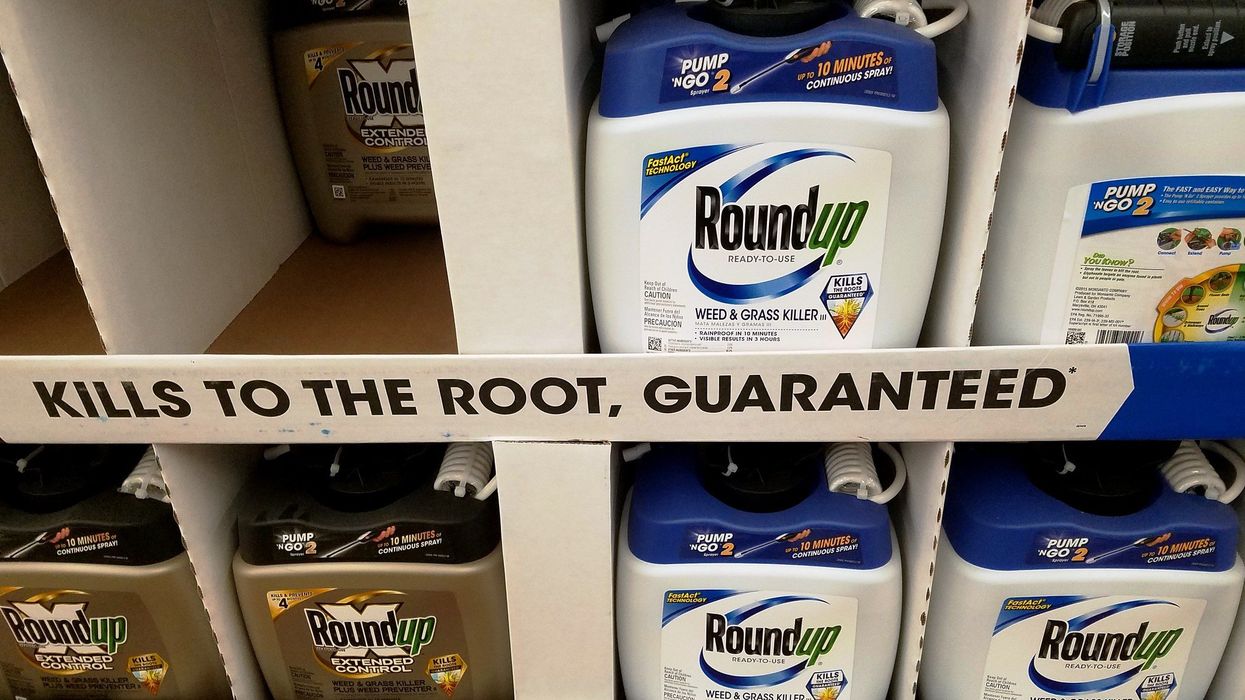
This story was originally published in The New Lede, a journalism project of the Environmental Working Group, and is republished here with permission.
New types of Roundup weed killing products marketed to U.S. consumers contain chemicals that pose greater health risks to people than prior formulations suspected of causing cancer, according to an analysis by an environmental health advocacy group. The report was disputed by Bayer, which called the analysis “deeply flawed.”
Friends of the Earth (FOE) reported Tuesday it found four chemicals have recently been added to Roundup products that have been scientifically shown to cause a variety of health problems, including reproductive defects, kidney and liver damage and neurotoxicity.
The analysis comes after the agrochemical company Bayer pledged that it would remove glyphosate from its popular Roundup herbicide products sold for residential lawn and garden use starting in 2023.
Bayer, which bought Monsanto in 2018, made the change to try to curtail the filing of future litigation as it battles thousands of lawsuits filed against Monsanto by cancer patients who claim they developed non-Hodgkin lymphoma from using Monsanto’s Roundup and other glyphosate-based herbicides.
But FOE said it found the chemicals used in the new Roundup formulations are, on average, 45 times more toxic to humans experiencing chronic exposure than glyphosate-based Roundup. The chemicals were roughly four times more acutely toxic, the group said.
Notably, all four of the added chemicals pose greater risk of long-term and/or reproductive health problems than does glyphosate, based on the Environmental Protection Agency’s (EPA) evaluation of safety studies, FOE said.
Of the four chemicals found in the products – diquat dibromide, fluazifop-P-butyl, triclopyr, and imazapic – the “worst offender”, according to FOE, is diquat dibromide. It is 200 times more toxic than glyphosate when exposure occurs over a long period of time, the group said, and is banned in the European Union. It is 27 times more toxic in acute exposures, the group said.
Kendra Klein, FOE deputy director for science and an author of the report, said the Environmental Protection Agency (EPA) should be providing stronger oversight.
“People need to realize that the EPA has long put the profits of companies like Bayer ahead of their health when it comes to pesticides,” Klein said. “And now, they’ve allowed Bayer to quietly swap out the chemicals in Roundup, making it far more toxic to people’s health, without changing the packaging or warning consumers of the increased risks.”
Bayer said the report was factually wrong and out of line with regulatory assessments for measuring risk.
In a statement, the company said: “A recent, deeply flawed report contains false claims about the active ingredients in Roundup Lawn & Garden products. The active ingredients in all Roundup Lawn & Garden products have been thoroughly studied, reviewed and approved by independent experts at the Environmental Protection Agency (EPA) and used safely and effectively in many different weed-control products from a variety of companies for decades. The report reaches its misleading conclusion through a methodology that is entirely inconsistent with how leading regulatory and health experts measure risk in how people use these products in the real world and in accordance with the label. Simply put, consumers can feel confident safely using Roundup products.”
The EPA did not respond to a request for comment.
Comparing the data
In conducting its analysis, FOE said it collected ingredient information from the labels of Roundup products sold at Lowe’s and Home Depot – two of the largest lawn and garden retailers in the U.S. – between June and the end of September of this year.
Several of the Roundup products on store shelves still contained glyphosate, the organization said. But eight Roundup branded herbicide products were made without glyphosate.
FOE said its comparative analysis of the toxicity of the active chemical ingredients in the new and old Roundup formulations is based on EPA’s assessment of the chronic toxicity of individual pesticide active ingredients. The EPA does not routinely assess the combinations of chemicals often used in the finished formulations sold to customers, FOE pointed out.
But it does set what it calls a ‘chronic reference dose’ for individual chemicals. The agency defines a reference dose as a daily oral exposure humans can experience over a long period of time without any “appreciable risk” of harmful effects. The measurement is the only data available from the EPA on chronic toxicity of the different chemicals, FOE said.
In addition to comparing the chronic reference dose data, FOE said it took into account the concentration levels of each of the active ingredient chemicals in the formulations.
The new Roundup formulations are also more harmful to the environment than the glyphosate-based products have been, according to FOE. The chemicals replacing glyphosate are “significantly more likely to harm bees, birds, fish, earthworms, and aquatic organisms,” the group said.
A pervasive product
Glyphosate is the most heavily applied herbicide in history, both in the U.S. and globally and has been used by farmers as well as consumers for more than 40 years. The chemical has been so widely used that residues are pervasive in the environment – studies have found it in food and drinking water, even in rainfall. It’s also commonly found in human urine.
A new study published in October underscored the ubiquitous nature of the chemical, finding the weed killing chemical present in each of 99 air samples collected inside urban households in New York and 15 other states. Prior studies similarly have found glyphosate residues in household dust, despite the fact the chemical is not used indoors.
Officials with Monsanto and Bayer have always assured the public and regulators that when used as directed, exposure to the weedkiller does not pose a threat to human health.
But scores of studies have found otherwise, and in 2015 the International Agency for Research on Cancer (IARC) classified it as a probable human carcinogen. More than 100,000 people filed lawsuits after the IARC decision blaming their cancers on use of the Monsanto/Bayer glyphosate products, such as Roundup. Bayer has settled thousands of cases, and both won and lost several more in trials around the U.S.
As of July of this year, Bayer had resolved roughly 114,000 of 172,000 Roundup cancer claims.
Last year, a coalition of farm worker, public health and environmental advocates filed a legal petition with the U.S. Environmental Protection Agency (EPA) demanding the agency suspend authorization glyphosate. The petition asserts that the chemical does not meet the required safety standard set by federal law.
The EPA backs Bayer’s position that glyphosate is safe when used as directed.
This story is co-published with The New Lede, a journalism project of the Environmental Working Group.





